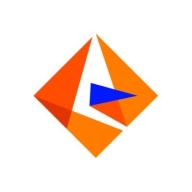

Informatica PowerCenter and StreamSets compete in the data integration platform category. StreamSets has the upper hand due to its flexibility and modern feature set.
Features: Informatica PowerCenter offers robust ETL capabilities, scalability for large enterprises, and excellent structured data processing. StreamSets provides real-time data flow monitoring, ease of use, and versatile handling of unstructured data.
Room for Improvement: Informatica PowerCenter could improve by reducing deployment complexity, streamlining cloud integration, and enhancing user interface modernity. StreamSets might work on extending support for legacy systems, enhancing transformation capabilities for complex data, and optimizing its error handling processes.
Ease of Deployment and Customer Service: StreamSets offers agile deployment with cloud-native architecture easing implementation. Informatica PowerCenter requires more resources for deployment due to legacy complexity. Both deliver competent customer support, but StreamSets provides a more streamlined experience.
Pricing and ROI: StreamSets typically provides competitive pricing with subscription models, offering quicker ROI through lower upfront costs and scalability. Informatica PowerCenter may have higher setup expenses, but it can deliver substantial long-term ROI for large organizations.
It also plays a vital role in revenue calculations, net asset valuations, and other key factors that support customer data and investment data pipelines.
I have occasionally needed to communicate with the technical support of Informatica PowerCenter, especially when raising cases for complex mappings and performance optimization to identify bottlenecks in transformations.
I like the technical support provided by Informatica.
IBM technical support sometimes transfers tickets between different teams due to shift changes, which can be frustrating.
In the cloud, scaling up and down becomes easy when working with cloud providers.
For scalability, I would rate Informatica PowerCenter between eight to nine.
Informatica PowerCenter is stable and can scale well.
The product is very stable with very few issues encountered in production.
With Informatica PowerCenter, I am looking for an AI interface that looks at the underlying data model of the databases and the metadata of the tables, allowing the developer to provide instructions on what data sources to connect to and how to apply or create Transformations.
Informatica Cloud and its support becomes quite expensive for the organization compared to peers such as SnapLogic or Netezza, which offer lower pricing.
Utilizing more stored procedures from Oracle databases in an easy way would significantly boost performance.
It would be beneficial if StreamSets addressed any potential memory leak issues to prevent unnecessary upgrades.
The price of Informatica PowerCenter is high, especially for small and medium-sized businesses.
I find that the pricing and licensing for Informatica PowerCenter align with its quality.
The system supports real-time integration, which is essential for many of my tasks.
The most valuable features of Informatica PowerCenter that I have found so far include transformations, the ease of connectivity with different source systems, and the parameter files.
The functions in Informatica PowerCenter that I have found most valuable are the way it manages the volume of data, the push down optimization, and the performance aspects of it, mostly related to parallelism techniques.
It allows a hybrid installation approach, rather than being completely cloud-based or on-premises.
| Product | Market Share (%) |
|---|---|
| Informatica PowerCenter | 6.0% |
| StreamSets | 1.5% |
| Other | 92.5% |


| Company Size | Count |
|---|---|
| Small Business | 15 |
| Midsize Enterprise | 10 |
| Large Enterprise | 72 |
| Company Size | Count |
|---|---|
| Small Business | 9 |
| Midsize Enterprise | 2 |
| Large Enterprise | 11 |
Informatica PowerCenter is a data integration and data visualization tool. The solution works as an enterprise data integration platform that helps organizations access, transform, and integrate data from various systems. The product is designed to support companies in the full cycle of a project, from its initial rollout to critical deployments. Informatica PowerCenter allows developers and analysts to collaborate while accelerating the work process to deploy projects within days instead of months.
The Advanced edition of the product provides an additional real-time engine which allows companies to have always-on enterprise data integration. This ensures seamless collaboration and increment of data lineage visibility and impacts analysis.
The Premium edition of the solution offers an early warning system that detects unexpected behaviors or incorrect utilization of resources in the workflows and alerts companies in the case that these occur. This version of the product also offers automatic data validation, which ensures data accuracy and reduces testing time and expenditure of resources for by up to 90%.
Informatica PowerCenter Features
The product provides users with various features which allow them to execute data integration initiatives such as analytics, data warehousing, data governance, consolidation, and application migration. The features of the solution include:
Informatica PowerCenter Benefits
The benefits of using Informatica PowerCenter include:
Reviews from Real Users
Yahya T., a developer and architect at L'Oreal, says the product is stable, provides good support, and integrating it with other systems is very fast.
Mohamed E., a senior manager for Data management and data governance at a tech company, says PowerCenter is stable, mature, and offers flexibility in building the pipeline and has a drag-and-drop mode because it's GUI-based; technical support is brilliant.
StreamSets is a data integration platform that enables organizations to efficiently move and process data across various systems. It offers a user-friendly interface for designing, deploying, and managing data pipelines, allowing users to easily connect to various data sources and destinations. StreamSets also provides real-time monitoring and alerting capabilities, ensuring that data is flowing smoothly and any issues are quickly addressed.
We monitor all Data Integration reviews to prevent fraudulent reviews and keep review quality high. We do not post reviews by company employees or direct competitors. We validate each review for authenticity via cross-reference with LinkedIn, and personal follow-up with the reviewer when necessary.